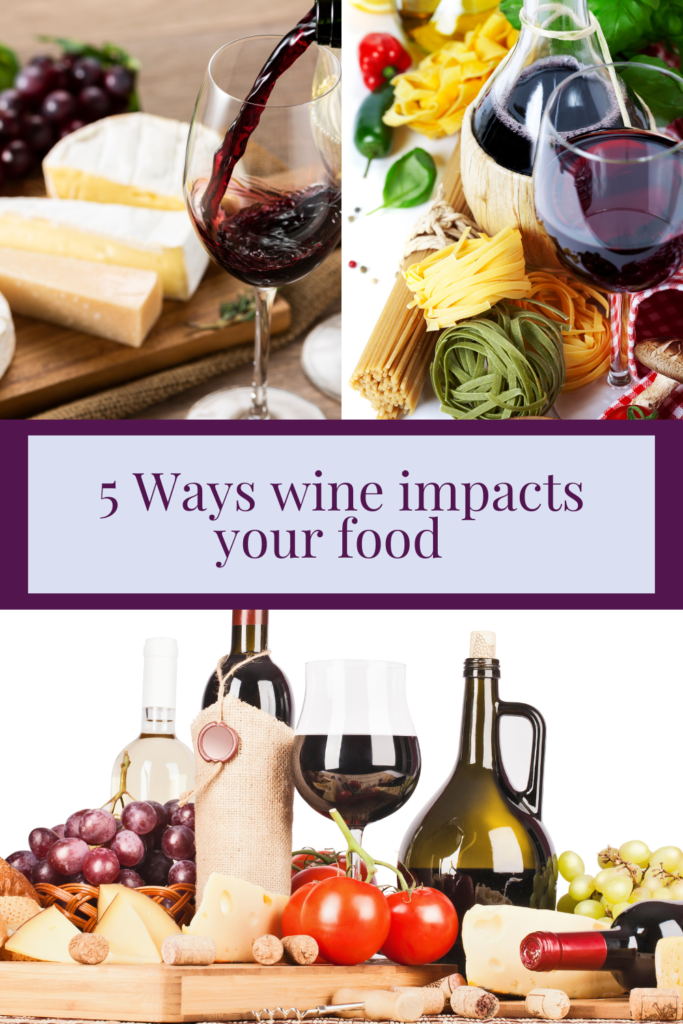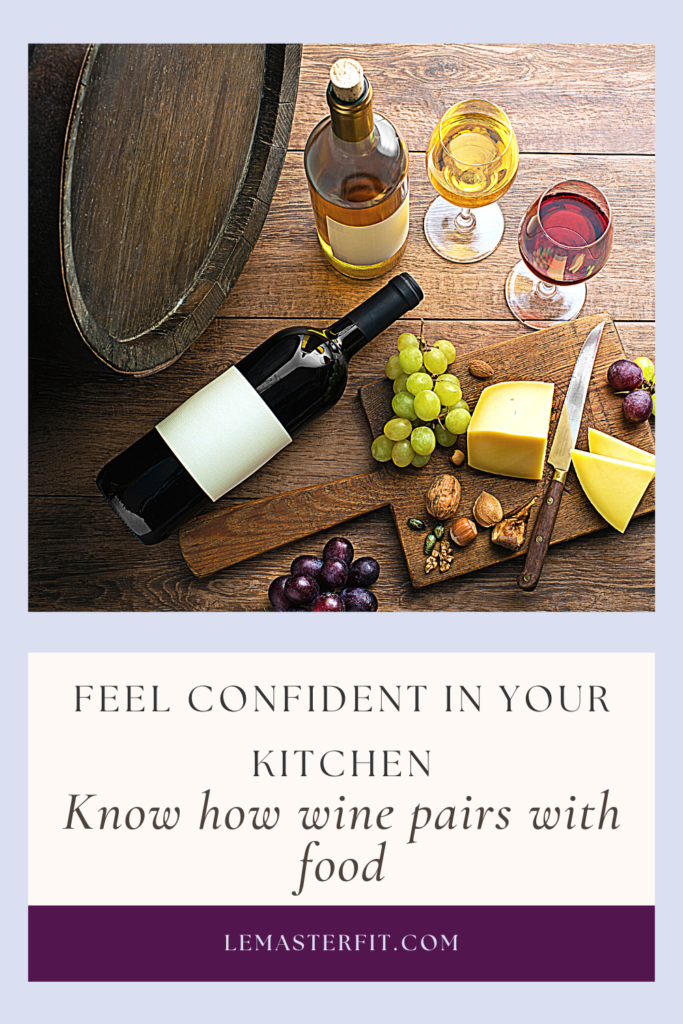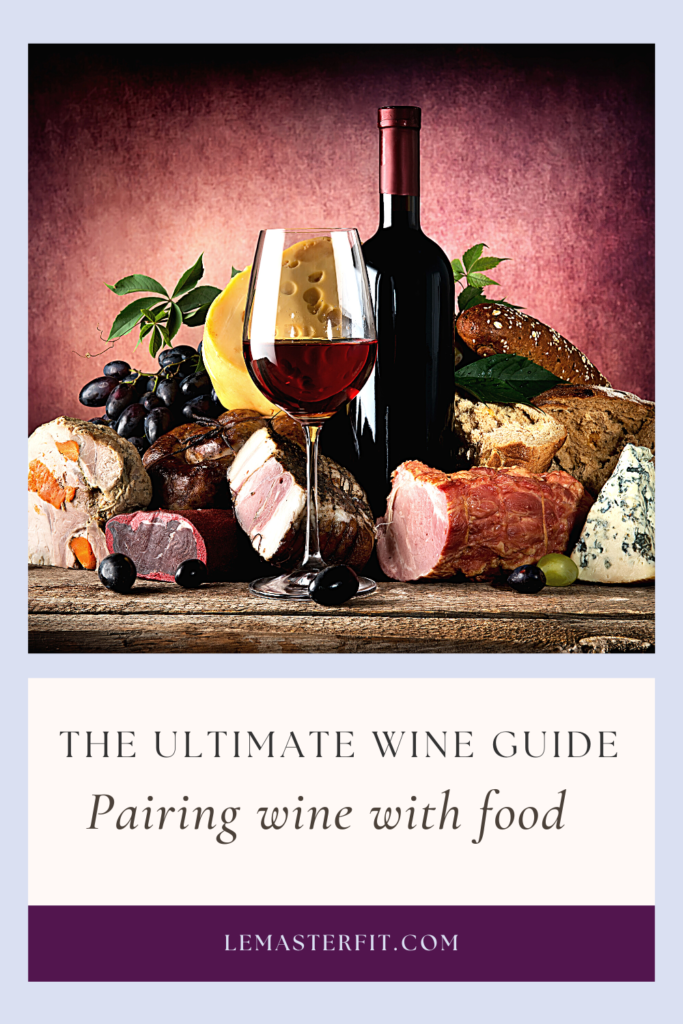Have you ever looked at a recipe that asks you to cook with wine and feel lost? You have questions like: Which wine do I choose? Can I just use a cheap $5 bottle of wine? Does the alcohol burn off while cooking? Have no fear… I want to help put some of these questions at ease. Plus I will give you must have tips when cooking with wine!
Cooking with wine: More in depth than you thought
I don’t know if you’re aware but, universities have full courses focused solely on wine, wine making, and the science of wine. Wine itself is an incredibly complex product that affects all five senses in a variety of ways. The colour, aroma, taste, texture, temperature, and even your surroundings can impact the flavor you perceive when drinking wine. This is the case for cooking with wine as well. Different wine will alter the texture, the flavor, and aroma of food. These quality attributes will change again when the wine is heated for whatever duration of the cooking process.
Navigating the complexity of Cooking with Wine
There are so many layers of wine and so it is incredibly complex. However, we can break it down to make wine, pairing wine, and cooking with wine a little more manageable. Check out my guide to know the difference between wines and exactly which wines to use when cooking with different meats, veggies, cooking methods, and even herbs and spices!
Does Cooking with wine burn off all the alcohol?
There is a common misconception that cooking with wine or other alcoholic drinks burns off the alcohol in the dish. This is not true and there are scientific reasons behind this. Now, I won’t get into all the chemical bonds and the electrostatic interactions that occur when wine interacts with water, oils, and food. Go check this short paper out if you want to go down that rabbit hole. Several studies have found that, depending on the temperature and length of time cooking, anywhere between 4-85% of alcohol stays in the dish and does not evaporate.
Alcohol boils at 78°C (172°F), which is much lower than the boiling point of water. However, alcohol mixes very well and interacts with both water and oil. Many studies have found that, when alcohol is added to a pot in the middle of cooking, about a quarter of the alcohol will burn off. After another 30 minutes of simmering, maybe an extra 10-15% will burn off, but the alcohol evaporation rate slows considerably. If alcohol is being used for sauces or glazes, about 75% of the wine will remain. Slow cooked dishes are the only dishes that have less than 20% of the alcohol remaining. Its important to note, however, that there is still alcohol in the dish so, if some of your guests can not consume alcohol, make sure you let them know if you cooked with wine.

Why should you try cooking with wine?
Wine interacts with both fat and water, people will add the wine to different dishes to elevate the flavor, aroma, and eating experience of different dishes. From a 1000-foot view, this means, when you add say, wine, to make a sauce for beef, the wine will interact with the water that is in the pot and the fats from the beef (or oil if you added it to the pan) making those molecules “stuck” in the pot. When you add something like water to a dish, only things able to dissolve in water will interact with it. When you add something with alcohol, every component of the dish will bind with the alcohol and release several flavor compounds that intensify the flavor and amplify the dish.
Cooking with Wine Improves the Texture of dishes
Aside from the flavor and aroma interaction with wine and seasonings, adding wine to dishes protein components of the dishes can improve texture and tenderness of the protein. Alcohol interacts with proteins in a similar way to salt. Because wine is often acidic, the tartaric acid and the alcohol particles interact with meats by breaking down proteins and improving the tenderness of the meat to where you can have “fall off the bone” lamb leg. This explains why many recipes that raditionally use tougher cuts of meat in a slow cooker, also have wine as an ingredient–the wine helps tenderize the tough cuts to make those “melt in your mouth” meals.
A common reason to cook with wine is to maintain texture. For instance, if you add wine to a cheese dish (like a fondue), the tartaric acid prevents the cheese from curdling and helps maintain a smooth texture. This is also true when eggs are present in the dish. Next time you make an omelette, try adding a splash of wine to the egg mix and taste the abundance of flavors and impeccable texture!
Having the perfect balance of wine in dishes can transform a meal into what your guests will consider as a restaurant worthy meal. But, because there are so many components to cooking with wine, its important to know how to pair wines with different dishes.
How to pair/choose wine for cooking

Having a perfect balance of wine and food can transform the flavors as the alcohol from wine interacts with the heat of the dish. Its important to add alcohol to dishes slowly. Too much will overwhelm the dish so, balance is key. A perfect balance will lend to a beautifully fragrant bouquet of aromas and flavors. Heat added to wine can deepen and intensify the flavor and even help with different textures for your meal.
Don’t just cook with a cheap bottle of wine
Many people will tell you to go out and get a cheap bottle of wine if you are cooking and that it doesn’t make a difference. This is far from the truth
Think about it this way. The cheap bottles of wine (like $5) are cheap for a reason. They’re often unbalanced in flavor and overpowered by acid, which leaves you with a bitter, sometimes metallic, aftertaste. It is off putting. You wouldn’t want to drink the cheap bottle of wine. So why would you add unbalanced wine to you dish and potential ruin it? You would only incorporate the acidic, bitter flavors instead of amplifying the floral bouquet if you buy say, even a $15 bottle of wine). I’m not saying to buy a $50 bottle. I have found so many wonderful wines around Australia that are about $15-20. The rule of the thumb I have is, if I would drink the wine, I’ll cook with it, otherwise, you risk upsetting the balance of your meal.
Know your Meal to Choose Your wine
Generally, when I cook with wine, I will opt for a dryer wine. Sweet wines have heaps of sugar that change the texture of the dish into something I don’t want (like jam). I think medium bodied wines can provide balance in cooking without going overboard and leaving the acidic aftertaste nobody wants. You should use wine as an ingredient used to complement a dish, not the main character that takes center stage.
As we talked about, the flavor of wine is quite complex because of the complexity of how the flavors interact with all of your senses, food, and even atmosphere at particular times but basic flavors of wine include fruity, earthy, floral, herbal, mineral, and woodsy. There are over 800 different aromatic compounds in wine, though! For the beginner, its important to understand the acidic component of the wine. This will help you determine which wine to buy when you go make your next chicken or beef meal!
Acidity in Wine
The principal component of acidity in wine is from tartaric acid. The tannins from wine give wine the texture and structure (or body). Tannins impact the structure of wine. Tannins interact with proteins – a key component to most dishes that call for a wine added to the sauce, etc.
When tannins interact with fats in dishes that have dairy, for instance, it makes a smoother and more consistent structure. Therefore, the interaction helps change the structure of a protein, either by making things like meat more tender or by creating a smooth consistency in eggs and dairy. If there are no fats in the dish, however, too much wine (and tannins) can bring out a bitter flavor.
Match wine to food
The important note for pairing wine with your dish and knowing what to use when cooking is simplified if you follow this rule and you don’t want to go too crazy: match your wine to the food you are cooking and match your wine to either the sauce or protein. Light dishes often pair best with white wines while darker, heavier dishes (think red meats and roasts) pair better with red wines. Get your wine pairing guide here!
Quick Tips
- Match fatty foods with high tannin wines (dry, fuller bodied wines)
- Fish is best served with white wine (unless it’s a heavy/red meat fish)
- Stews and slow roasted meats match best with low tannin wines
- You can pair spicier foods with sweeter wines to balance and complement the flavor instead of amplifying the spice.
- Remember that salt magnifies flavors of acid, so super salty dishes would best suit a wine that is slightly sweet and low in tannins.
My Blueberry Red Wine Sauce
| Ingredient | Quantity |
| Cabernet Sauvignon | 1 cup |
| Blueberries | 1 – 1.5 cup |
| Green onions | ½ cup chopped |
| Salt | ¼ tsp |
| pepper | ¼ tsp |
| Cayenne pepper | ¼ tsp (at most) |
| Lactose free Butter | 0.5 TBS (helps make the sauce glossy) |
| Oil | 2 TBS |

| Instructions |
| Add oil to skillet and heat over medium-high heat |
| Add the green onions and cook until transparent |
| Add blueberries and simmer in the skillet until they start bleeding (between 5-10 minutes) |
| After blueberries are bleeding, add the red wine and season with salt, pepper, and a dash of cayenne |
| Let the wine reduce to about half and add the lactose free butter, mix in and serve |

Lots of good information. Thanks. Can’t wait to try this!
Thanks for that! Let me know what you try and how it goes!